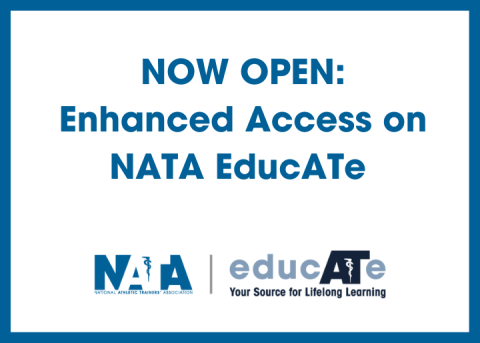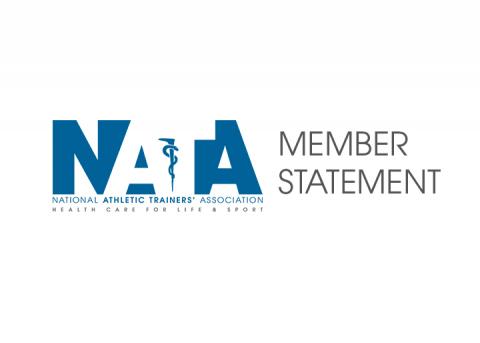
Enhanced access to the entire NATA EducATe On-Demand Course Catalog is now available to NATA members.
The NATA EducATe On-Demand Course Catalog includes more than 150 courses covering various disciplines ATs encounter in their daily practice. That’s more than 225 CEUs/hours of content.
Enroll in your enhanced-access courses now. Access to certain NATA conferences, virtual events and specialized content, such as microcredentials, require additional fees at the lower, discounted NATA member rate. This member benefit is nontransferable and lasts as long as the member is in good standing and fully paid.
To learn more about this new member benefit and what it means for you, visit the Enhanced Access FAQs page on the NATA website.
The following are the new courses now available, among many others at your disposal on NATA EducATe:
Gender Equity: Strategies & Tools To Level the Playing Field
By Marjorie Albohm, MS, AT Ret., and Rebecca Lopez, PhD, LAT, FNATA
This course aims to identify the underlying mechanisms of gender inequity and list the ways to identify gender inequity in the workplace. It also aims to assist ATs in developing an effective plan to address gender inequity in their individual workplace. Additionally, its objective is to identify how gender equity enhances patient care and how to create a plan to collaborate with other health care professionals/societies to address/create gender equity policy statements.
Developing a Therapeutic Exercise Program for Mechanical Low Back Pain: Examining the Evidence and Crafting Appropriate Progressions
By Kenneth Cieslak, DC, ATC, CSCS
The objective of this course is to recognize the most common low back pain diagnoses, their sign and symptom patterns and objective findings common to each. It also aims to examine literature to determine the efficacy of applying the most recent clinical prediction rules for determining an appropriate treatment strategy. It serves to examine literature as it applies to rehabilitation concepts such as motor control programs, strengthening protocols, proprioceptive strategies and manual therapy approaches and discuss their relative value and limitations in an effective treatment program. It discusses the role of movement screens and their potential role in the diagnostic process as well as their potential pitfalls. It also explores several popular exercise approaches, reviewing and practicing some sample progressions for each.
Workers' Compensation, the Traditional Sports Med Model and the AT: Working Together To Improve Patient Care and ROI
By Tiffany McGuffin, MS, LAT, ATC
This course aims to illustrate basic workers' compensation terms and limitations for providers and evaluate the role the athletic trainer can play in the confines of the Occupational Safety and Health Administration, and workers' compensation. It also aims to identify gaps in the injury process for workers and ways the AT can improve patient experience and outcomes.





